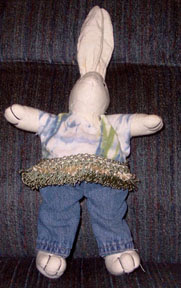In what may seem at first to be a completely unrelated thought, I am reading a series of books by S. M. Stirling, set in an alternate present in which technology has mysteriously ceased to work. In this set of books, those who survive are those most adaptable, and also those who have the knowledge to raise and preserve food and build shelter.
Obviously, Stirling is writing fiction. It's highly unlikely that we will wake up tomorrow and find ourselves in his Emberverse. But we do live in a society that desperately needs to change. If we do not alter our habits voluntarily now, it is conceivable that our children and their children will find themselves with no options.
Global warming and climate change is a reality. According to the National Sustainable Agriculture Information Service, produce travels between 1,200 to 2,000 miles from farm to plate. The pollutants and greenhouse gas emissions created by the transport of food is huge: the Natural Resources Defense Council provides these figures:
- Almost 250,000 tons of global warming gases released were attributable to imports of food products— the equivalent amount of pollution produced by more than 40,000 vehicles on the road or nearly two power plants.
- More than 6,000 tons of smog-forming nitrogen oxides were released into the air—the equivalent of almost 1.5 million vehicles or 263 power plants!
- 300 tons of sooty particulate matter were released into the air—the equivalent of more than 1.2 million cars or 53 power plants.
And what about Nature Deficit Disorder? In a Salon interview with Richard Louv about his book Last Child in the Woods, Sarah Karnasiewicz says
- Louv argues that sensationalist media coverage and paranoid parents have literally "scared children straight out of the woods and fields," while promoting a litigious culture of fear that favors "safe" regimented sports over imaginative play. Well-meaning elementary school curricula may teach students everything there is to know about the Amazon rain forest's endangered species, but do little to encourage kids' personal relationship with the world outside their own doors. And advances in technology, while opening up a wealth of "virtual" experiences to the young, have made it easier and easier for children to spend less time outside.
Later in the interview, Louv says:
- But the hyper-awareness gained from early experience in nature may be the flip side of hyper-vigilance; a positive way to pay attention, and, when it's appropriate, to be on guard. We're familiar with the term "street smart." Perhaps another, wider, adaptive intelligence is available to the young? Call it "nature smart." One father I spoke to said he believes that a child in nature is required to make decisions not often encountered in a more constricted, planned environment -- ones that not only present danger, but opportunity. Organized sports, with its finite set of rules, is said to build character. If that is true, and of course it can be, nature experience must do the same, in ways we do not fully understand. A natural environment is far more complex than any playing field. Nature does offer rules and risk, and subtly informs all the senses.
It's not just children who are losing basic survival skills. When we first moved to this area, I almost had a stroke while riding in a car with a Real Estate agent. We were on our way to look at a house, driving down a rural road. She said "I wish these farmers would sell off the land next to the roads for development. What do they need it for?" Obviously she had a shaky concept about the relationship between farmers and food. Girl Scout Councils across the country organize badge days where girls earn sewing or cooking badges because many leaders don't know how to sew or cook.
So- what skills do our children need? No one is arguing against providing them with technology skills, but should they also be able to plant a garden, grow a tomato in a pot or fix something that is broken?








No comments:
Post a Comment